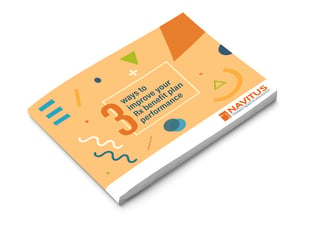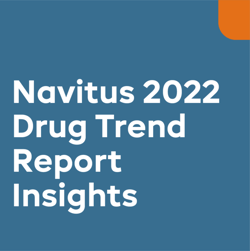Missed our PBMI webinar last week? Catch up on everything you need to know!
In a Pharmacy Benefit Management Institute (PBMI) webcast, Merle Jarvill and Amy Schmerse, Clinical Account Executives at Navitus, joined forces to discuss key areas that plan sponsors can fine tune to improve benefit plan performance, increase savings and reach their financial goals.

Pharmacy costs are on the rise, driving up concern among plan sponsors on how to better manage expenses, making this a relevant topic for the webinar. According to a recent report, by 2023 drug spend is expected to increase to over $420 billion per year.
Merle kicked things off with a discussion on how to choose the right PBM business model and how it can impact your ability to achieve real savings. The three models available in the marketplace today include traditional, hybrid and pass-through, each with varying levels of transparency and spread retention.
He pointed out that depending on what model you align your organization with, “hidden income streams from spread may lead to operational decisions that benefit the PBM instead of the plan.” He also explained that, some PBMs are flexible in their programs, services, and cost savings strategies, while others are more rigid because they have revenue sources ‘built’ into the contract.
After the brief overview of the available PBM models, the presenters jumped right into the: 3 Ways to Improve your Rx Benefit Plan Performance, described below.
#1 OPTIMIZING FORMULARY MANAGEMENT
Amy shared specific things you can do or ask your PBM about, regardless of the type of PBM that you are working with, that will improve transparency and performance when it comes to your formulary. Below are the key ideas discussed when it comes to formulary management:
- Focus on clinically effective, lowest-net-cost drugs, not highly rebated drugs that are likely to cost the plan more
- Identify and remove wasteful drugs from the formulary
- Establish unique tier placement – be open to going outside of the traditional formulary setup
Pro Tip: Reducing the use of high-cost, low-value drugs could save plan sponsors up to 24% on Rx expenses
#2 IMPLEMENTING EFFECTIVE UTILIZATION MANAGEMENT STRATEGIES
Amy further explained that once you have your formulary in place, it’s important to have a gatekeeper to manage it. Utilization management (UM) programs such as step therapy, quantity limits and prior authorization are great tools that plan sponsors can use.
One cost savings tip shared to lower specialty drug costs for both the plan and the member, while also reducing waste, is to implement a split-fill program or 30-day supply limit.
She pointed out that approving more utilization management claims, in general, may lead to higher overall drug spend. A recent Segal study concluded that traditional PBMs tend to approve significantly more UM claims than pass-through PBMs. This is because more expensive branded drugs often require the use of UM if a cheaper drug, brand or generic, are available. These high-cost brand drugs also have high rebates tied to them that are very attractive to traditional PBMs.
Pro Tip: A lowest-net-cost approach paired with the right UM programs can cost 10% less than a rebate-focused formulary.
#3 DEFINING CHANNEL MANAGEMENT STRATEGIES
Merle explained that plan sponsors can optimize their distribution channels by determining which channel and benefit design will work better for their benefit plan goals and membership. For example, plan sponsors may want to consider cost savings strategies such as narrow retail networks, acquisition cost-plus specialty pharmacies and non-PBM owned mail order providers.
He mentioned that most PBMs also own their own mail order and/or specialty pharmacy facilities and steer the plan sponsors membership to use them to benefit the PBM, not the plan sponsor.
Narrow retail networks can lower costs even more by offering value by contracting with certain pharmacies for better rates. The savings are then passed on to you as members start using those pharmacies.
Pro Tip: Using a narrow network strategy will typically save you between 3-5% of retail drug spend. However, some savings can be as much as 10%.
This highly attended webinar delivered REAL tangible strategies that can deliver REAL results for plan sponsors.
Get even more tips and listen to the full webinar by clicking here.
Learn how you and your organization can implement these cost-reducing strategies to save 10-15% on your Rx benefit costs. Download our free e-Book below.






